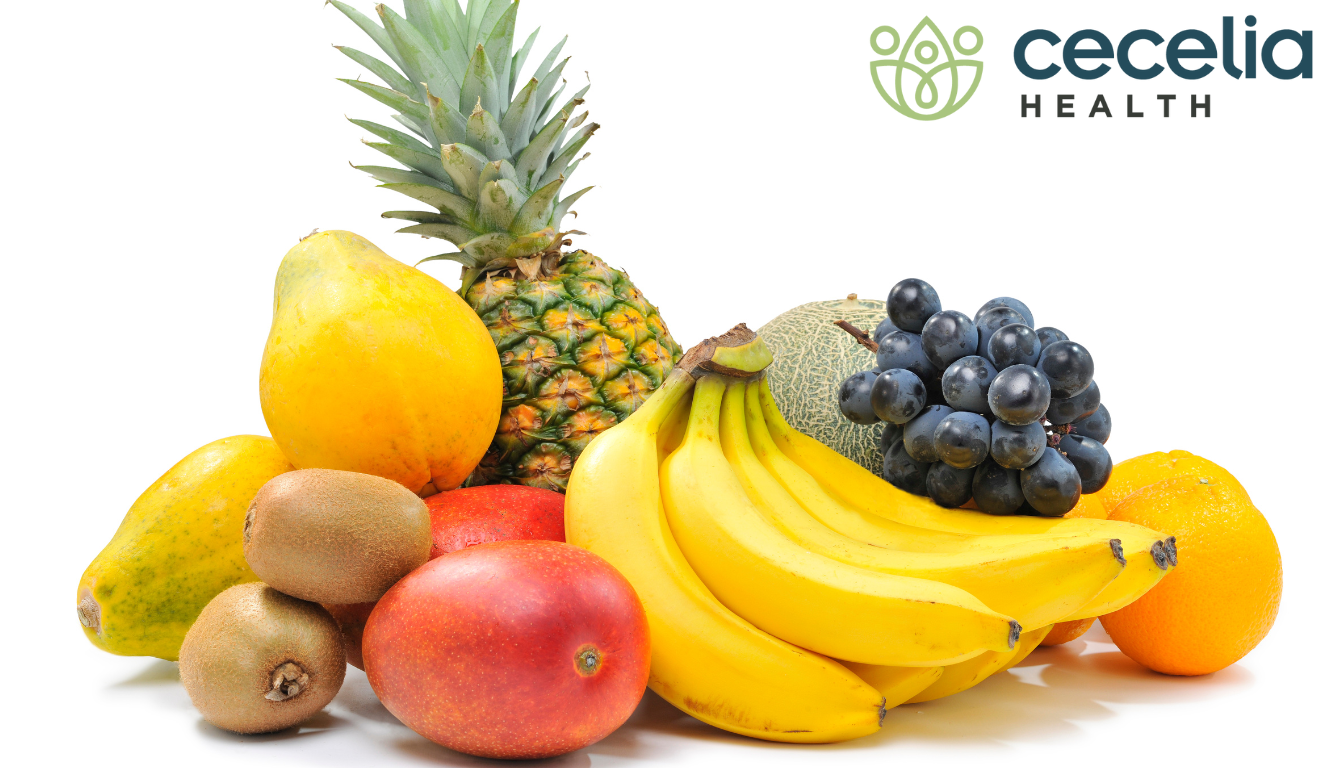Having diabetes means that there are certain foods that one may need to limit, particularly carbohydrates (carbs), to maintain stable blood sugar levels. Fruit, because it is sweet, and contains carbs, often gets lumped into the category of a food that someone with diabetes should avoid or eat in limited quantity. If this is your perception, I am here to tell you that fruit, a healthy whole food, can fit into your diabetes meal plan and should be included regularly. All fruits contain carbohydrates and therefore will need to be counted in your carb count in your meal plan or eaten within appropriate portion sizes. Fruits are what we would call healthy carbs as they contain natural carbs or sugars and are also packed full of other important nutrients such as fiber, vitamins, and antioxidants, all which are good for your overall health.
What fruits are best?
The best choices of fruit are any that are fresh, frozen, or canned without added sugar.
- If choosing canned fruit, look for words like “packed in its own juices,” “unsweetened” or “no added sugar.”
- Dried fruit and 100% fruit juice are also nutritious choices, but the portion sizes are small so they may not be as filling as other choices.
Eating too many carbohydrates at a meal or snack can raise your blood sugar. It is best to know the serving size of the fruit you are eating. As with any food, even if it is good for you, it is possible to eat too much of a good thing. Since fruit does contain carbohydrates, you do want to watch your portions and not eat too much at one time.
Let’s look at how to fit fruit into your meal plan
One serving of fruit contains 15 grams of carbohydrates, so it is important to know what consists of a serving. With fruit, it is not as easy as saying 1 piece of fruit equals one serving. A small piece of whole fruit or about ½ cup of frozen or canned fruit has about 15 grams of carbohydrate and counts as 1 carb serving. Servings for most fresh berries and melons are from ¾–1 cup. Fruit juice can range from ⅓–½ cup and only two tablespoons of dried fruit like raisins or dried cherries count as a serving. Juice and dried fruit have portions which are very small so it is important to be cautious with your serving sizes and often best to limit these since the servings are so small they may not be as satisfying as eating a fresh piece of fruit. If the fruit you want to eat is large, ½ will count as 1 carb serving or have 15 grams of carbs, so if you were to eat the whole piece of fruit, you would be eating 2 carb servings or 30 grams of carbs. This may be why you have heard that certain fruits are higher in sugar. Bananas often get the reputation as being a high carb fruit, which is true they do contain more carbs because they are larger than other fruits. If you keep your portion to ½ of a banana (about 4”) than you are getting 15 grams of carbohydrates, the same that is in a small piece of fruit.
Use this list to guide you on your serving sizes:
Fruit servings:
1 small apple, orange, peach, pear, kiwi (about the size of a tennis ball)
½ banana, mango
¾ cup blueberries, raspberries
1 cup strawberries
15 small grapes
1 cup melon
2 T raisins
½ cup canned fruit in natural juices
When building your meal plan, fruit would be eaten in exchange for other sources of carbohydrate in your meal plan such as starchy vegetables, grains, or dairy. If you were to include fruit at your meal your plate might look like this: ½ of your plate should be non-starchy vegetables, ¼ of the plate lean protein, and the other ¼ of the plate would be carbohydrates – fruit would fall into that quarter of your plate.
Most adults should consume 2-3 fruit servings per day. If you are looking for ways to include more fruit in your meal plan a good place to start is for a snack. Choosing fruit for a snack can help satisfy sweet cravings that you may have and prevent you from choosing candy or other sweets. Fruit is also a good source of fiber which can help with digestion and can slow the absorption of sugar and control blood sugar levels. Including a serving of fruit with a serving of protein can make a great mid-morning or mid-afternoon snack. Healthy snacks between meals are often important to keep blood sugar stable. Fruit is also a good addition to any of your meals.
Need some ideas of where to include fruit in your meal plan, check these out:
Snacks:
Small apple with 1 T peanut butter
15 grapes with a low-fat cheese stick
6 oz container plain Greek yogurt with ½ cup berries
1 rice cake, 1 T almond butter and ½ banana sliced
1 cup strawberries and ¼ cup cottage cheese
Meals:
Spinach salad with sliced strawberries
1 cup oatmeal with ½ cup berries or ½ chopped apple or pear
Add ½ cup fruit salad to your breakfast meal of 1 egg and 1 slice wheat toast
Grill sliced pineapple or peaches to serve with grilled chicken
Mango salsa added to grilled fish
Beverages:
Add sliced lemon or orange to water or unsweetened tea
Infuse water with melon or kiwi
Fruity recipes:
Spinach-Strawberry Salad with Feta & Walnuts (9grams of carbs per serving)
https://www.eatingwell.com/recipe/270668/spinach-strawberry-salad-with-feta-walnuts/
Sautéed Shrimp with Mango Salsa & Coconut Cauliflower Rice (26g of carbs per meal)
https://www.eatingwell.com/recipe/261687/sauteed-shrimp-with-mango-salsa-coconut-cauliflower-rice/
